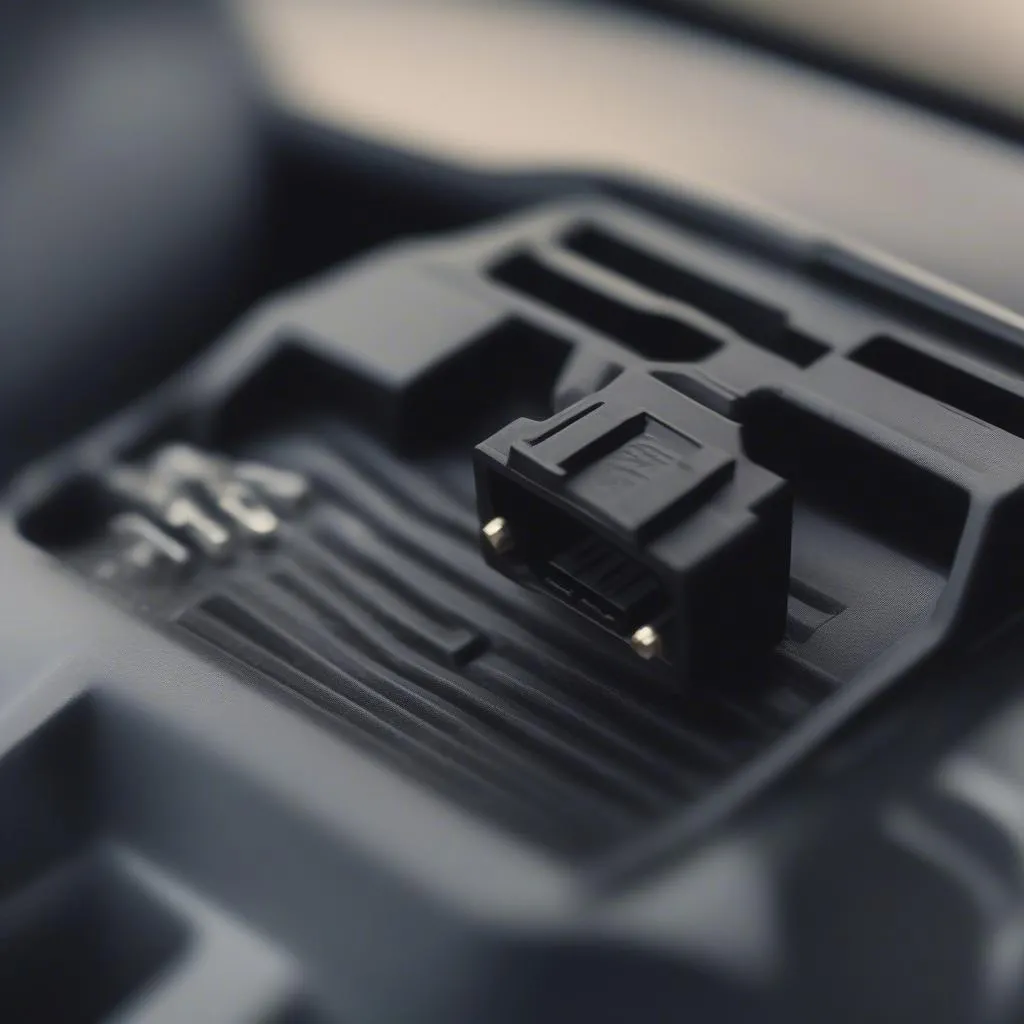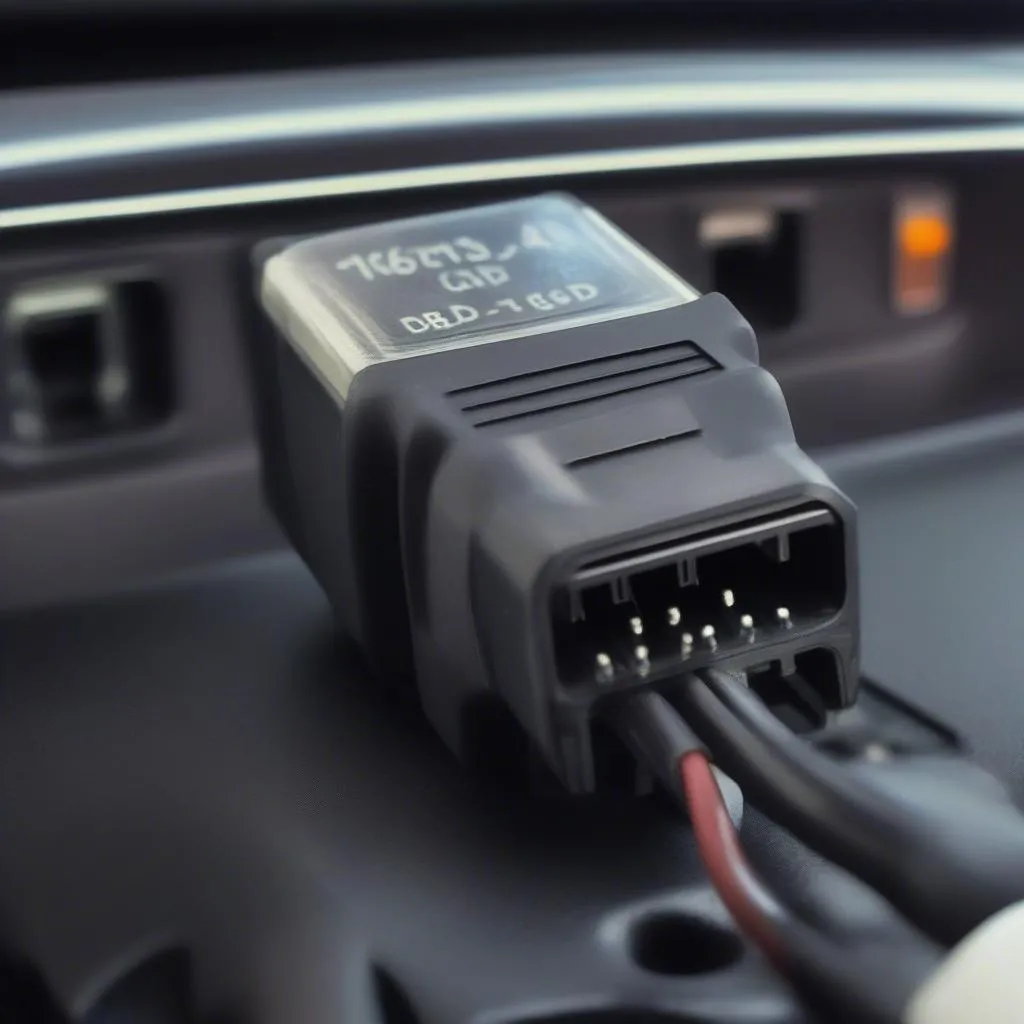Have you ever been working on a car, trying to diagnose a problem, and found yourself staring at a strange connector under the dash? Maybe you’ve wondered, “What is this 6-pin OBD connector all about?” Well, you’re not alone. Many car owners find themselves asking the same question. Today, we’re diving into the world of OBD connectors and exploring the difference between the 6-pin OBD and the more common OBD2 connector.
Understanding OBD Connectors: A Quick History
The OBD, or On-Board Diagnostics, system was developed to help car owners and technicians diagnose issues with their vehicles. Early versions of the system, like the 6-pin OBD, were found in vehicles manufactured before 1996. These systems primarily provided diagnostic data, such as engine fault codes, to qualified mechanics. However, with the advent of OBD2, things changed dramatically.
Why Did OBD2 Become the Standard?
OBD2, standardized in 1996, brought a whole new level of functionality to the table. It offered greater compatibility, expanded data capabilities, and standardized diagnostic protocols. This made it easier for mechanics to diagnose problems, as well as for car owners to access diagnostic information. OBD2 also paved the way for more advanced diagnostics, such as emissions monitoring, fuel economy tracking, and even real-time data analysis.
6-Pin OBD vs. OBD2 Connector: The Key Differences
The main difference between the 6-pin OBD and the OBD2 connector lies in their physical structure and capabilities. The 6-pin OBD connector is smaller and has a less robust design compared to the 16-pin OBD2 connector. Here’s a breakdown:
6-Pin OBD:
- Number of Pins: 6
- Type: Proprietary, car-specific
- Data: Limited to basic engine fault codes
- Compatibility: Not compatible with OBD2 scanners
- Vehicles: Found in vehicles manufactured before 1996 (primarily in North America)
OBD2 Connector:
- Number of Pins: 16
- Type: Standardized across all manufacturers
- Data: Comprehensive engine data, emissions, fuel economy, and more
- Compatibility: Compatible with OBD2 scanners and most aftermarket devices
- Vehicles: Found in vehicles manufactured after 1996 in North America and many other parts of the world.
What Does This Mean For You?
If you’re working on a car with a 6-pin OBD connector, you won’t be able to use a standard OBD2 scanner to diagnose problems. You’ll need a specific 6-pin OBD scanner that’s compatible with your vehicle’s system. However, if you’re working on a car with an OBD2 connector, you’re in luck! You’ll have access to a wide range of diagnostic tools and resources.
Example: Troubleshooting a 1995 Ford Explorer
Let’s say you’re having issues with a 1995 Ford Explorer. Since it’s a pre-1996 vehicle, it likely has a 6-pin OBD connector. To diagnose any problems, you’ll need a 6-pin OBD scanner that’s compatible with Ford vehicles. You can find these scanners online or at specialized automotive stores.
Example: Troubleshooting a 2002 Honda Accord
Now, let’s say you’re working on a 2002 Honda Accord. This vehicle will have an OBD2 connector. You can use any standard OBD2 scanner to access diagnostic information, troubleshoot problems, and even monitor your car’s performance in real-time.
Key Takeaways:
- Vehicles manufactured before 1996 typically have a 6-pin OBD connector.
- Vehicles manufactured after 1996 typically have a 16-pin OBD2 connector.
- OBD2 offers wider compatibility, more data capabilities, and standardized protocols compared to the older 6-pin OBD.
Frequently Asked Questions (FAQs)
Q: Can I use an OBD2 scanner on a 6-pin OBD connector?
A: No, you cannot use an OBD2 scanner on a 6-pin OBD connector. You’ll need a specialized scanner compatible with your vehicle’s system.
Q: Is there a way to adapt a 6-pin OBD connector to OBD2?
A: There are adapters available, but they may not always provide complete functionality. The best solution is to use a scanner that’s specifically designed for the 6-pin OBD connector.
Q: How can I tell if my car has a 6-pin OBD or OBD2 connector?
A: Look under the dash of your car, near the steering wheel or the driver’s side. You’ll find a rectangular connector with either 6 pins or 16 pins.
Q: Can I use an OBD2 scanner on any car manufactured after 1996?
A: While OBD2 became the standard in 1996, there may be exceptions. Some vehicles from later years might use a different type of diagnostic connector. It’s always best to double-check your vehicle’s manual or online resources to be sure.
Related Articles:
- Adapter Kia OBD Port
- 95 Econoline OBD
- Does 1995 4Runner Have an OBD Port
- 99 Accord Which OBD
- How to Reset OBD Port
Need Help with Your Car’s Diagnostics?
If you’re struggling with your car’s diagnostics, we’re here to help! We offer a range of services, including professional diagnostics, repair, and even remote support. Contact us via WhatsApp: +84767531508 to speak with one of our expert technicians.
 6-pin-obd-connector
6-pin-obd-connector
 obd2-diagnostic-port
obd2-diagnostic-port
Let us know your thoughts in the comments below! What have been your experiences with OBD connectors?